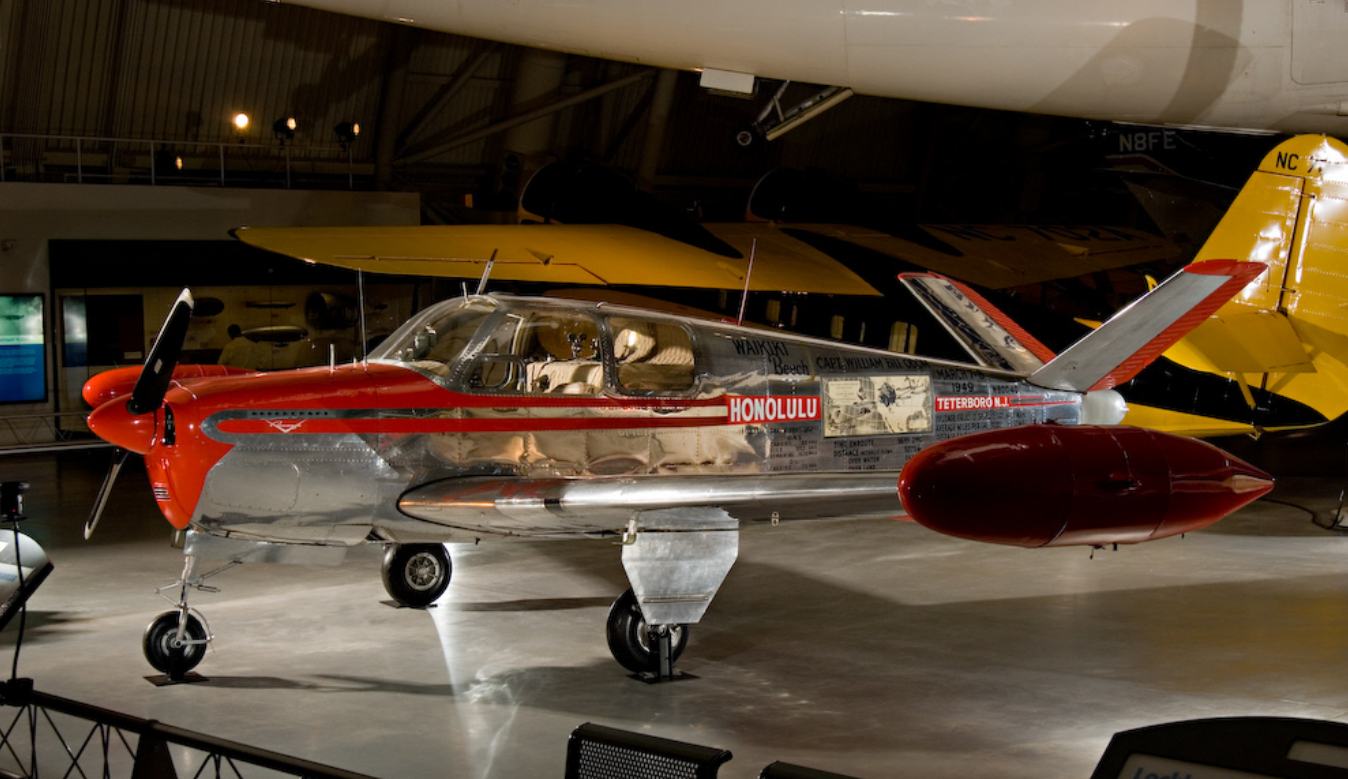

The Hawaii Aeronautics Commission Annual Report mentioned the flight:
March 1949
4—Bill Odom returns for second attempt of Honolulu-New York non-stop flight.
6—Bill Odom leaves on second Honolulu-New Jersey non-stop flight and lands at Teterboro, New Jersey on March 8, exactly 36 hours and 1 minute after leaving Honolulu Airport, setting a new distance record of 4,957.24 miles for light airplane and longest non-stop solo flight in his converted Beech Bonanza plane which was appropriately christened “Waikiki Beech.” Flight was made with only $75 worth of gasoline.
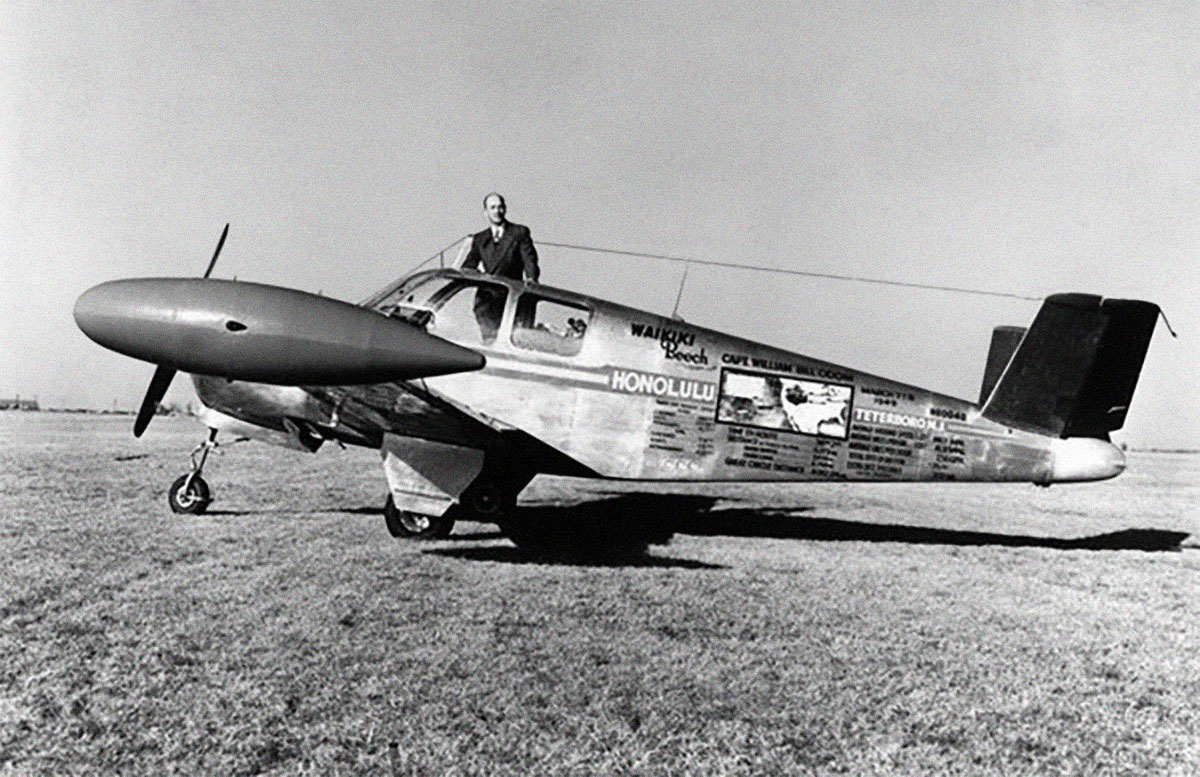
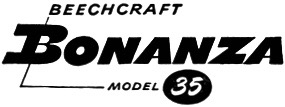
The Beechcraft Model 35 Bonanza is an all-metal, single-engine, four-place light civil airplane with retractable landing gear. The Bonanza has the distinctive V-tail with a 30° dihedral which combined the functions of a conventional vertical fin and rudder, and horizontal tail plane and elevators.
The Model 35 was 25 feet, 2 inches (7.671 meters) long with a wingspan of 32 feet, 10 inches (10.008 meters) and height of 6 feet, 6½ inches (1.994 meters). It had an empty weight of 1,458 pounds (661 kilograms) and gross weight of 2,550 pounds (1,157 kilograms.)
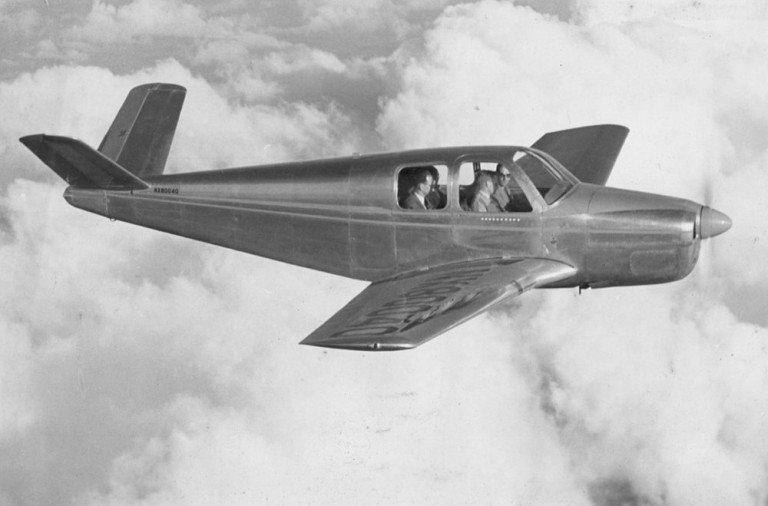

The “V-tail Bonanza” had a maximum speed of 184 miles per hour (296 kilometers per hour) at Sea Level, and a cruise speed of 175 miles per hour (282 kilometers per hour) at 10,000 feet (3,048 meters). Its service ceiling was 18,000 feet (5,486 meters). With full fuel, 40 gallons (151.4 liters), the airplane had a range of 750 miles (1,207 kilometers).
The Beechcraft 35 was in production from 1947 to 1982. More than 17,000 Model 35s and the similar Model 36 were built.
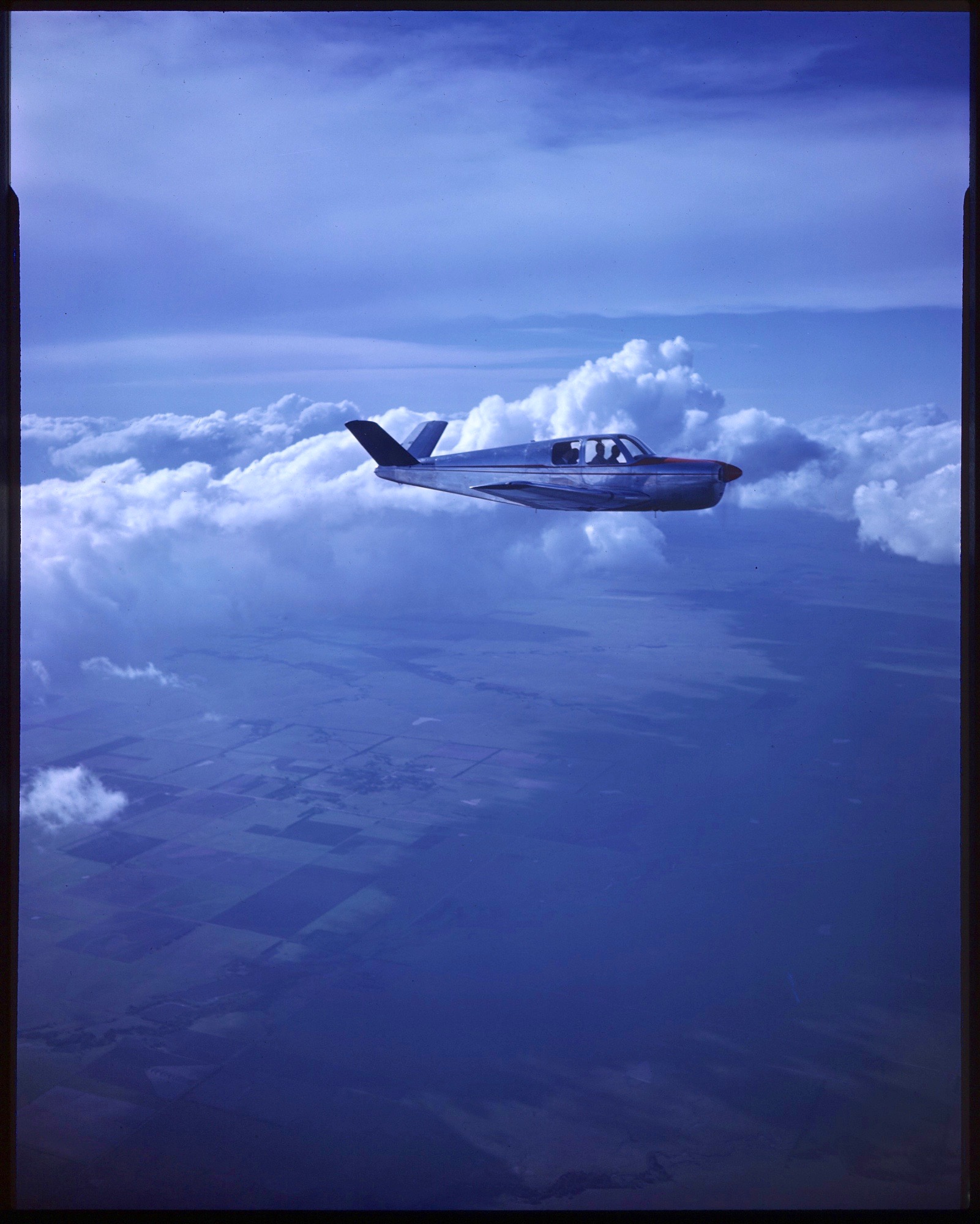
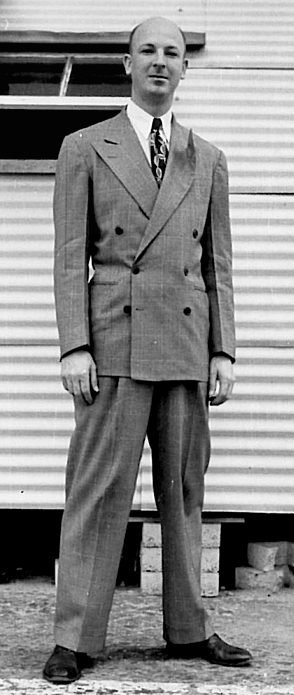
William Paul Odom was born at Raymore, Missouri, 21 October 1919, He was the first of three children of Dennis Paul Odom, a farmer, and Ethel E. Powers Odom.
Odom, then an airport radio operator, married Miss Dorothy Mae Wroe at Brentwood, Pennsylvania, 3 December 1939.
Odom flew for the Chinese National Aviation Corporation (CNAC) from 1944 to 1945, flying “The Hump,” the air route over the Himalayas from India to China.
William P. Odom had flown a Douglas A-26B Invader, NX67834, named Reynolds Bombshell, around the world in 3 days, 6 hours 55 minutes, 56 seconds, 12–16 April 1947. He made a second around the world flight, 7–11 August 1947, again flying the A-26. The duration of this second trip was 3 days, 1 hour, 5 minutes, 11 seconds. (Neither flight was recognized as a record by the FAI.)
In April 1948, Odom flew a Consolidated C-87A-CF Liberator Express transport, NL5151N, for the Reynolds Boston Museum China Expedition.
The communist Chinese government suspected that the expedition was actually a U.S. government espionage mission. The Liberator Express was impounded and the crew held for interrogation. Slipping away from their captors, they escaped and flew the transport to Japan. An “international incident” was the result.
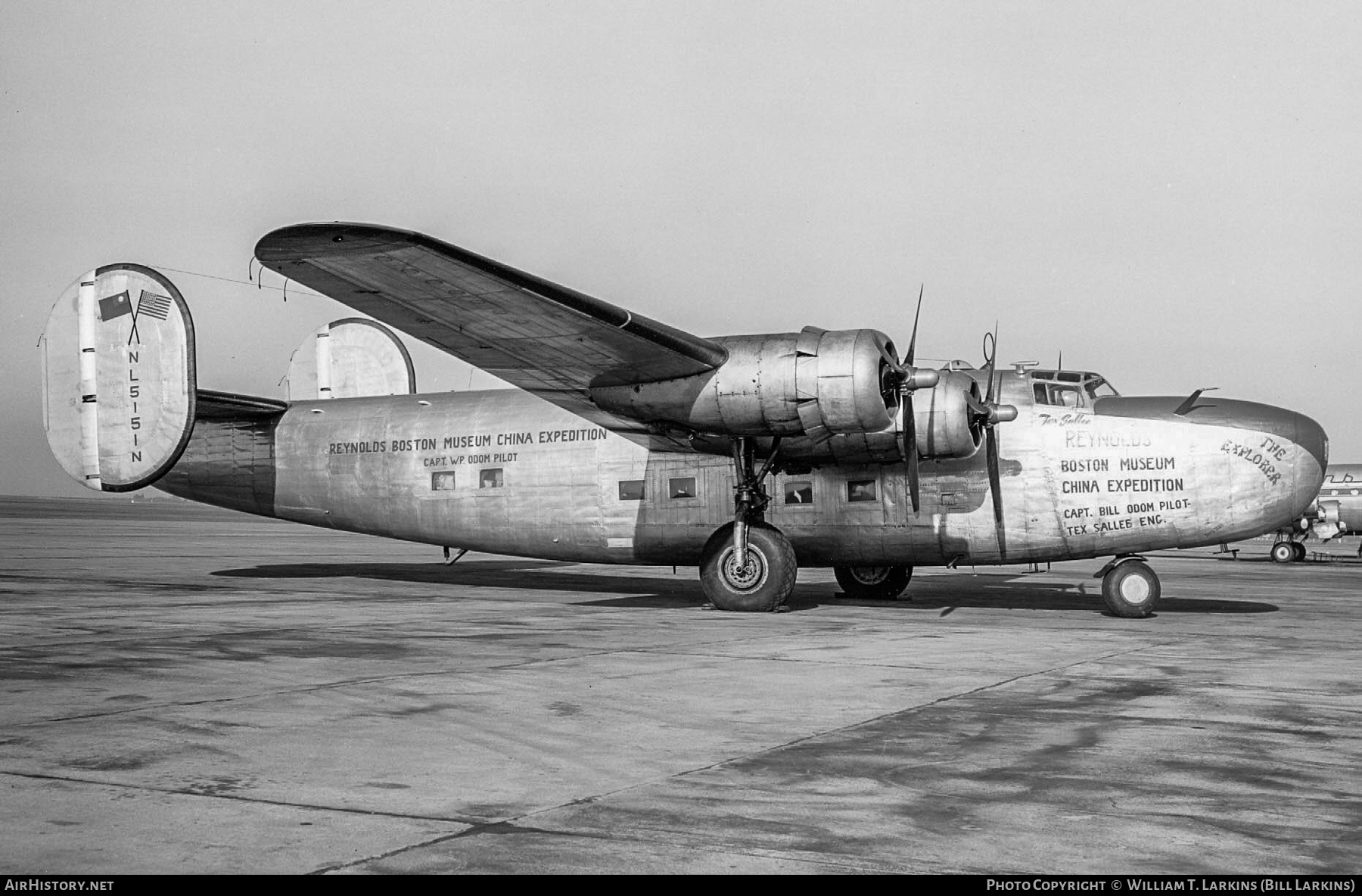
Odom had made another FAI World Record flight with Waikiki Beech, from from Honolulu, to Oakland, California, an official distance of 3,873.48 kilometers (2,406.87 miles).²
With these records and record attempts, Bill Odom persuaded Jackie Cochran to buy a radically-modified P-51C Mustang named Beguine (NX4845N) for him to fly at the 1949 National Air Races at Cleveland Municipal Airport, Ohio.
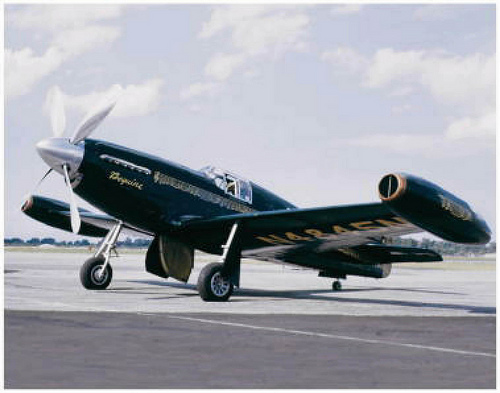
Though he had never flown in a pylon race, Odom had qualified the P-51 Beguine for the 105 mile Sohio Trophy Race, held 3 September 1949. He won the race, averaging 388.393 miles per hour (625.058 kilometers per hour. He had also entered the Thompson Trophy Race, qualifying with a speed of 405.565 miles per hour (652.694 kilometers per hour.)
The Thompson Trophy Race was held on 5 September. On the second lap, Odom’s P-51 went out of control and crashed into a house near the airport. Bill Odom, along with a woman and child on the ground, were killed.
William Paul Odom’s remains were buried at the Friendship Cemetery, Columbus, Mississippi.
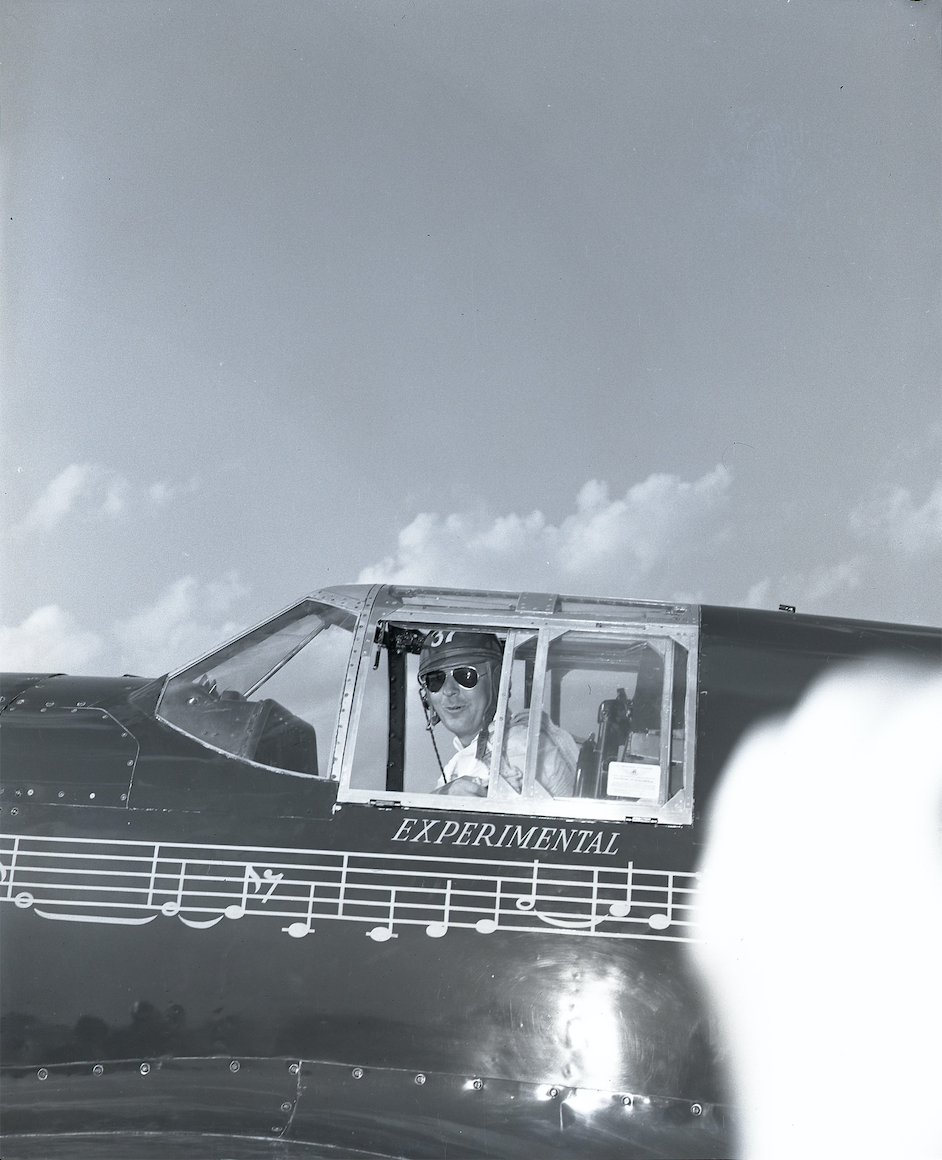
¹ FAI Record File Number 9112
² FAI Record File Number 14512
© 2019, Bryan R. Swopes
Is that Beguine aircraft using two turbojets on the wings ? that would be quite a story to tell about taking a fast piston engine fighter and hanging two turbojets on the wings. How tragic for the two civilians on the ground to die that day. So cavalier about racing failures back in those days. Of course, now we have 737 Max aircraft with questionable software and flight control-Pilot interactions now operating and apparently catastrophically failing here in 2019. the digital age of aviation has its failures like every other era but the rationale seems to be to meet a production deadline in a race to production with the Airbus A 320 Neo. so sad. so tragic. so human. Cheers to you. Great work as always. a real pleasure every time i visit your site.
There was a P-51 that was tested with tip-mounted ram jets, but in the case of Beguine, no. The pods contain the radiator and oil coolers.
With the recent Lion Air crash, once again crew training looks to be at fault. The crew didn’t understand the systems, so the didn’t realize that all they had to do was flick a switch.
Good story about the Bonanza. I would say that the Model 33 Debonair, being essentially a straight-tail Bonanza, is more similar than the Model 36, which has a straight tail and a stretched fuselage.
The airplane was named Beguine after a popular song of the time performed by Artie Shaw, Cole Porter’s “Begin the Beguine.” It was painted dark blue-green and the music from the song was painted in gold along the Mustang’s fuselage, with the race number 7.
$75 worth of gas in 1949. Wonder how big a loan he would have to take on to pay for 285 gals. of av-gas today?
Great story as usual, Bryan.
Around $1300 to fill it up if the tanks were dry (prices in Central Texas)
It was a sad end to a spectacular flying career.